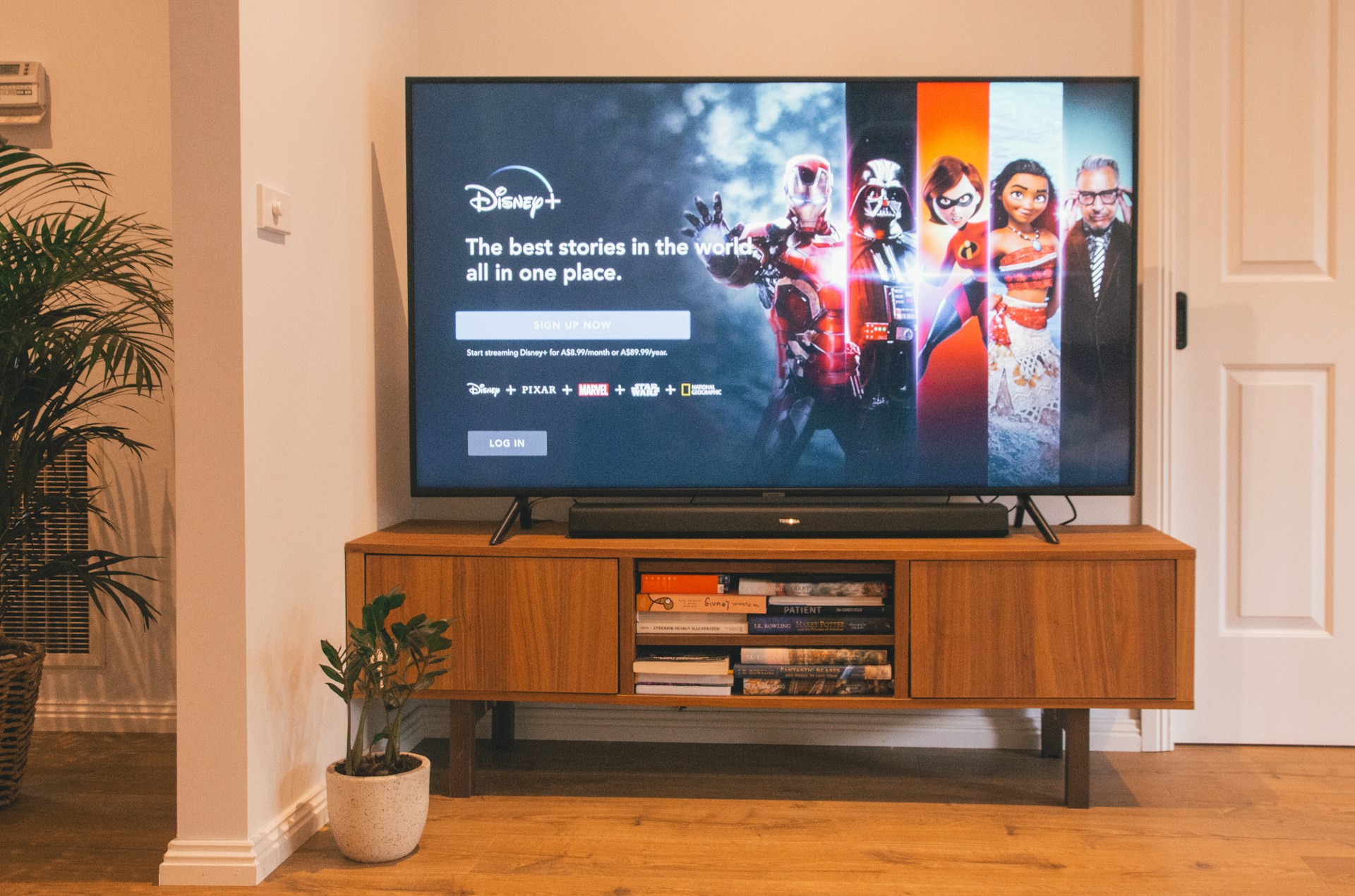
Your subscriptions might start out as an innocent thing. You might really want to watch a specific movie, open up a free trial, and before you know it, you’re being billed $7.99 a month for something you don’t even use. Maybe it’s a music app, a cloud storage plan, or a streaming service. Either way, all of these subscriptions can add up. In fact, according to C&R Research, many Americans now spend over $219 each year on subscriptions alone. So, if you are looking to cut costs like we are and regain control, here are seven small subscriptions that are probably costing you big… without you realizing it.
1. Streaming Services You Barely Watch
Streaming fatigue is real, and it’s hitting wallets hard. Many people subscribe to multiple platforms (Netflix, Hulu, Max, Disney+, and Paramount+) even though they only watch one or two regularly. The problem? Those “just in case” subscriptions can add up to over $60 a month. Try rotating subscriptions: cancel one or two each month and resubscribe later when your favorite shows return. It’s an easy way to save without missing out on entertainment.
2. App Store Subscriptions and Mobile Games
That $2.99 app upgrade or $5 weekly “premium” game pass might not seem like much, but collectively, they can cost hundreds annually. App-based charges are particularly dangerous because they often auto-renew without alerting you. Check your phone’s subscription settings and look for recurring app store charges you don’t recognize. Many users discover forgotten subscriptions for meditation, editing, or “AI enhancement” tools they haven’t opened in months. Canceling even two of these could save $20–$30 monthly.
3. Fitness Apps and Online Workouts
The pandemic made online fitness programs boom, but now that gyms and outdoor activities are back, many users are still paying for unused digital memberships. Subscriptions like Peloton Digital, Apple Fitness+, or Beachbody can cost between $13–$30 a month. If you’re no longer using them, pause or cancel those plans and switch to free YouTube workouts or fitness podcasts. Alternatively, try community-based fitness groups that cost less and provide real accountability. Canceling unused fitness apps can instantly boost your budget without sacrificing your health.
4. Cloud Storage and Photo Backup Services
Between iCloud, Google Drive, Dropbox, and OneDrive, it’s easy to end up with overlapping storage subscriptions. You might be paying for multiple cloud plans that all do the same thing. Most users only need one, usually tied to their main device ecosystem. Audit your storage usage and consolidate files into one provider. Dropping duplicate plans could save up to $15 a month while keeping your files just as safe.
5. Digital Magazines and News Sites
Many people sign up for digital news trials, only to forget to cancel before the billing kicks in. With prices ranging from $5 to $20 monthly, that unread “premium content” can drain your wallet fast. Check your PayPal or credit card statements for charges from lesser-known outlets or bundle deals like Apple News+. If you’re only reading one or two outlets regularly, it’s smarter to keep just one subscription or explore free news aggregators. It’s time to trim digital clutter and pay only for what you truly read.
6. Food Delivery and Grocery Memberships
Services like DoorDash DashPass, Uber One, or Instacart+ sound great for convenience, but if you’re not ordering weekly, those savings quickly vanish. Paying $10–$15 monthly for delivery perks you rarely use makes little sense. Plus, many of these memberships automatically renew at higher annual rates. A smarter approach is to use grocery pickup services (often free) or order directly through restaurants to avoid platform fees. Canceling one or two of these could free up $200 yearly.
7. Premium Credit Monitoring and Identity Protection
Everyone wants to feel secure, but premium identity protection services often charge $20–$35 monthly for features your bank already provides for free. Many credit cards and financial institutions now offer complimentary fraud alerts, score tracking, and monitoring tools. Review your protection plans and see if you’re duplicating services. Downgrading to a free or basic plan gives you similar coverage without the hefty price tag. Security shouldn’t come at the cost of your savings.
A Better Way to Take Back Control of Your Subscriptions
Tracking down these small charges can feel tedious, but it’s one of the fastest ways to reclaim lost money each month. Use budgeting tools like Rocket Money, Mint, or QuickBooks’ budgeting feature to automatically detect recurring payments. Most people are shocked to learn they’re paying for at least three unused subscriptions. Start with one audit, cancel what you don’t need, and set reminders to revisit your list quarterly. The result? More cash in your pocket and a leaner, smarter spending plan.
Have you ever discovered a forgotten subscription that shocked you? Share your story and your best money-saving tip in the comments below!
What to Read Next
- 6 Subscriptions That No Man Should Still Be Paying For
- Digital Subscriptions You Forgot You Had That Auto-Renew
- America’s New Addiction: Subscriptions You Forgot You Signed Up For
- The Hidden Truth About Subscription-Only Features in 2025 Car Models
- Thinking About a Car Subscription Instead of Buying? Here’s What You Need to Know
The post 7 ‘Small’ Subscriptions That Are Costing You Big Every Month appeared first on Clever Dude Personal Finance & Money.







